|
Photo impressions of field work on the FRAGILE project |
A personal photo report from
Maarten Loonen |
On Spitsbergen, we are studying combined effects of goose grazing and global warming on an arctic tundra. The project
is called FRAGILE and is financed by the
European Community. At the beginning of the season,
Maarten Loonen visited the field site and made the following report.
| Index to this page: | [goose training] | [the wet vegetation type] | [the dry vegetation type] |
 | |||
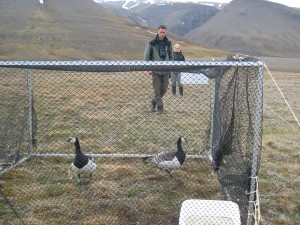 |
Goose trainingGeese are trained. They need some time to adjust to the cages and the experiment. We transport the geese inside the cage and are not touching them anymore.In the background in the middle of the panorama picture above, you can see the various blocks on the dry vegetation type. This vegetation type lies on a ridge. To the right, the area is much lower and a river streams through it. There you can see people working near blocks on the wet vegetation type. |
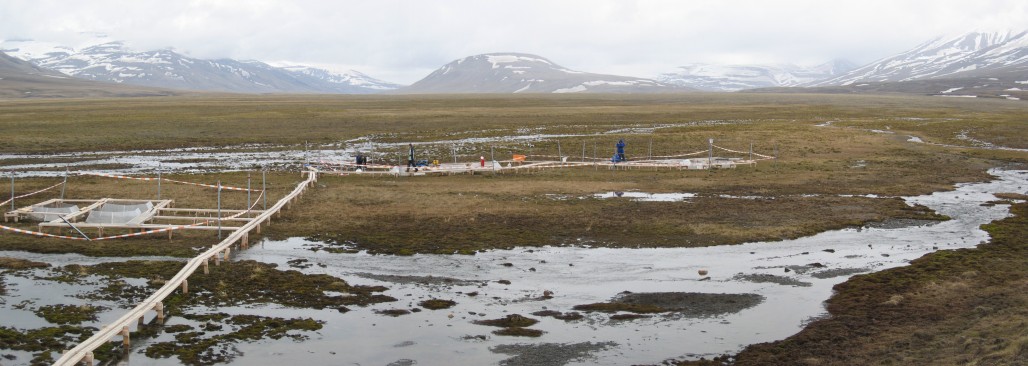 |
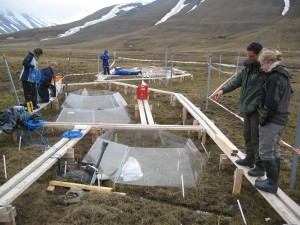 |
The wet vegetation typeAn overview of three of the six blocks on the wet vegetation type. You can clearly see the water flowing nearby. Today, there is a lot of activity going on. Suzanne is visiting the field site for the first time and Dries shows her the various treatments. |
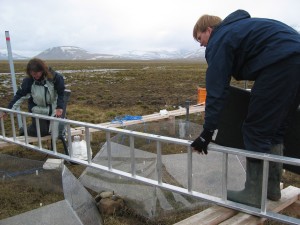 |
To the left, Sofie and Jani are preparing the equipment for measuring carbon exchange. To the right. Terra and Michelle are measuring shoots of Allopecurus | 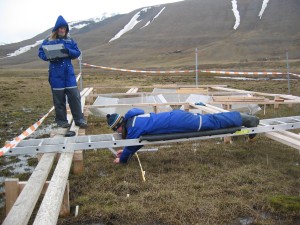 |
 |
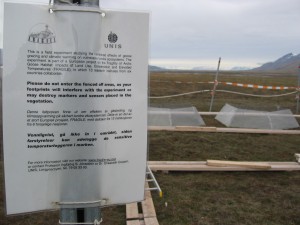 |
The dry vegetation typeAlso on the dry vegetation type, we use board walks to minimize the effect of trampling on the vegetation. Near the experiment, we have put up signs for the visitors. The text reads:This is a field experiment studying the combined effects of goose grazing and climatic warming on vulnerable tundra ecosystems. The experiment is part of a European project on the FRagility of Arctic Goose habitat: Impacts of Land use, conservation and Elevated temperatures (FRAGILE) in which 13 research institues from six countries collaborate. Please don't enter the fenced off areas as your footprints might interfere with the experiment or destroy markers and sensors placed in the vegetation |
| NEXT | next report on FRAGILE fieldwork: 1 August 2004 |
| PREVIOUS | previous report on FRAGILE fieldwork: 12 June 2004 |
| INDEX | index to all reports on FRAGILE fieldwork |
| New website with all years: | http://www.arcticstation.nl |
| Fieldwork in this period in Ny-Ålesund: | http://www.maartenloonen.nl/nyaal |
| Personal webpage Maarten Loonen, index to all his pages: | http://www.maartenloonen.nl |
| Official webpage of the Arctic Centre, Groningen (NL): | http://www.arctic-centre.nl |